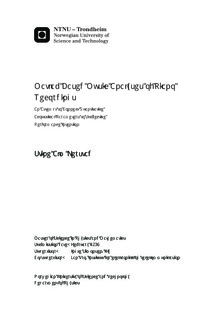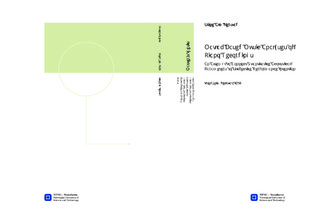| dc.description.abstract | Timbre is a well known concept in music and denotes adjectives describing a sound or sound sensation. All instruments possess a characteristic timbre making it possible to distinguish one type of instrument from another. An instrument can also produce a range of different timbres. It is highly relevant for a musician knowing about these innate properties of the instrument, as well as appropriate technical skills in order to change the musical expression.In this thesis, piano timbre is studied by performing various analyses on several recorded versions of the same excerpt from Symphonic Etudes op.13 by R. Schumann. The pianist has been asked to perform the piece with three different timbral intentions. Parts of this project have been to study whether there are physical qualities in the recorded signals which support this subjective intention. Possible relations between perceived sound and relative physical properties found from analyses have been examined. This is a classic acoustic problem where a subjective comprehension exists and then analysing the signal in order to identify audible properties to support this sensation. Various features of the signals have been identified and looked into, and thereby also studied the possibility to quantitatively distinguish these three timbres from each other. Part of this project have been to become familiar with functions available from the MIR(Music Information Retrieval)Toolbox in Matlab.Properties studied include temporal features, envelope amplitudes of signals, spectral centroids, rolloff frequencies, spectra and histogram envelopes, low-energy ratios and temporal development of energy together with average RMS energy for each signal. Length of each measure is found in order to examine the temporal development of each recording relative to average time per measure (inter-measure intervals). Smaller segments are studied, where analyses have been performed on various onsets. These analyses involve time between successive chords or notes (inter-onset intervals), in addition to attack time, attack slope and relative RMS energy for each onset.Some of the performed analyses showed clear differences between recordings, but not all cases showed clear documented unambiguous results. | nb_NO |

